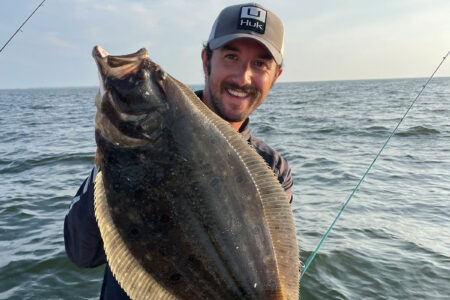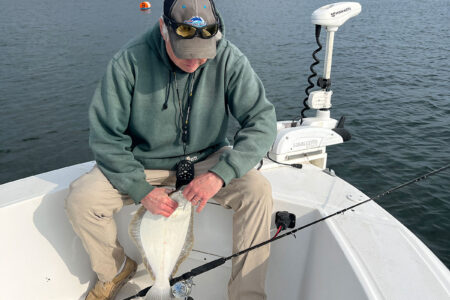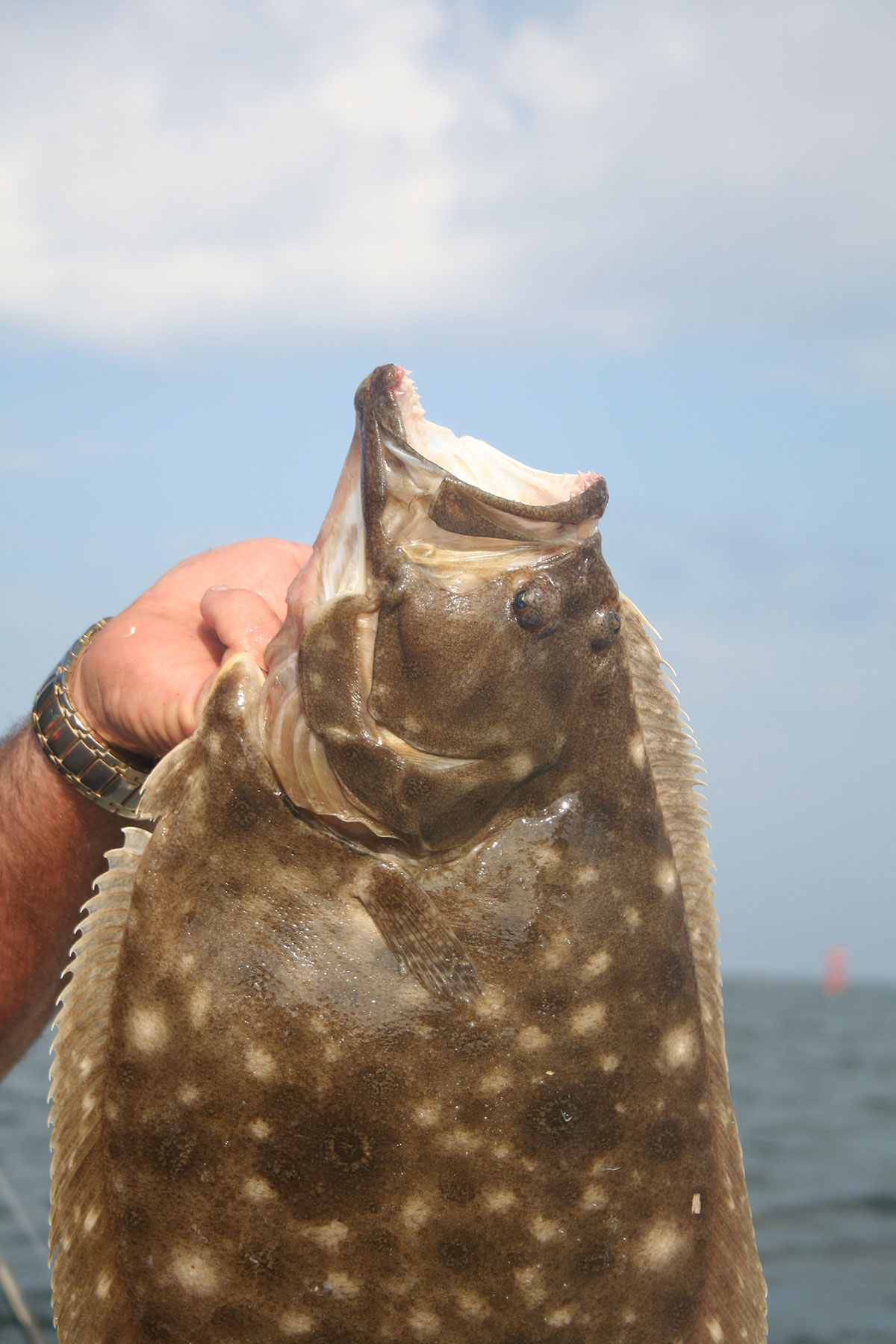
Flounder pounders in Delaware are already drifting and dreaming of doormats.
Indian River Bay is a shallow body of water that warms up quickly once we get some warm weather. It is best fished on the last of the flood and the first few hours of the ebb as the warm water on the shallow flats will attract summer flounder until the tide begins to fall and then the fish will move to the deeper channels and station themselves in locations where the falling water will wash bait right to them.
Your job, if you decide to take it, is to figure out exactly where the flounder will be at each stage of the tide, what they want to eat, how to present that bait to them, and do all of this between pre-dawn and 10 a.m. or late evening until dark.
You see, Indian River Bay is not only used by fishermen; it is also a playground for all sorts of boating activities. Jet skies are very popular. Water skiing is another fun sport. And we shouldn’t forget our fellow fishermen who get up around 10 a.m., have a nice breakfast, go down to the nearest tackle shop for bait and conversation, and then launch the boat and maybe get out on the water just before noon. By the time they finally get a bait in the water, it’s time for lunch, so they put their rods in holders. If they are really lucky a flounder may hook himself before they head in early because the sun is getting too hot to stay out any longer.
You may laugh, but I had a neighbor at Bayshore Campground in Ocean View who did exactly that. I would go out around dawn in my 14-foot tin boat and be back with some flounder about the time he was having breakfast. I would be sitting under my canopy having a cup of coffee and he would see me and say, “You going fishing today?” I would reply, “I may go up on the beach later on.” This was true, as I would take the wife and kids up on the beach, where I would surf fish while the kids played in the ocean. My wife and several of our friend’s wives would all get together while the men fished.
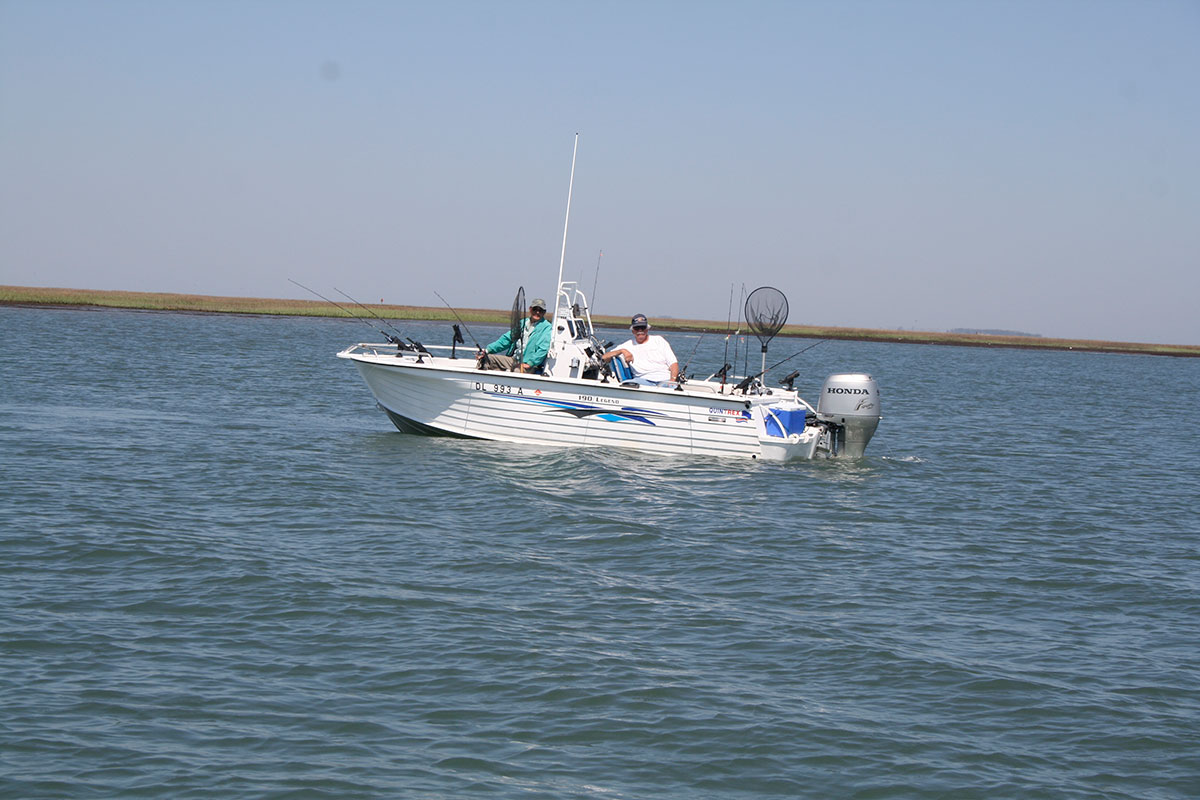
When & Where
Today, when I fish Indian River Bay, I launch my 16-foot tin boat at Indian River Marina (302-227-3071). They have a nice ramp and a decent amount of parking, especially if you get there early. Where I begin to fish depends on the stage of the tide and the direction of the wind. Since I usually start early in the morning, the direction of the wind is not as critical as the direction of the current.
If I have an incoming current, I may begin my first drift as soon as I clear the entrance to Indian River Marina. There is a channel that runs tight to Burton’s Island on your starboard side that will hold flounder. This is not a one drift and done channel. Flounder will hold on the banks alongside the island, the deep part of the channel and along the side of the shoal on the south side of the channel.
Once you are satisfied you have caught all the keepers in that channel, you should move to the other side of the shoal and make a drift or two there. The biggest problem here is the boat traffic running towards the Indian River Inlet and the ocean beyond. If it is a weekday, the traffic won’t be too bad, but on a weekend, especially a Saturday, it may be impossible to fish here.
Fear not, for just across the way, opposite the end of the campground on the south side of the inlet, is a reasonably calm section of water that can hold flounder. I will begin my drift at the end of the campground, where the shoreline curves outward and creates a small rip. Be careful not to drift too close to shore as this is a popular location for land-based fishing, and you don’t want to be dodging 3- or 4-ounce sinkers. Some anglers will drift the area from just west of the bridge to the end of the campground. I find the current here too fast for a flounder drift. I am sure there are fish here and I have caught blues and stripers on bucktails and metal, but no flounder for me.
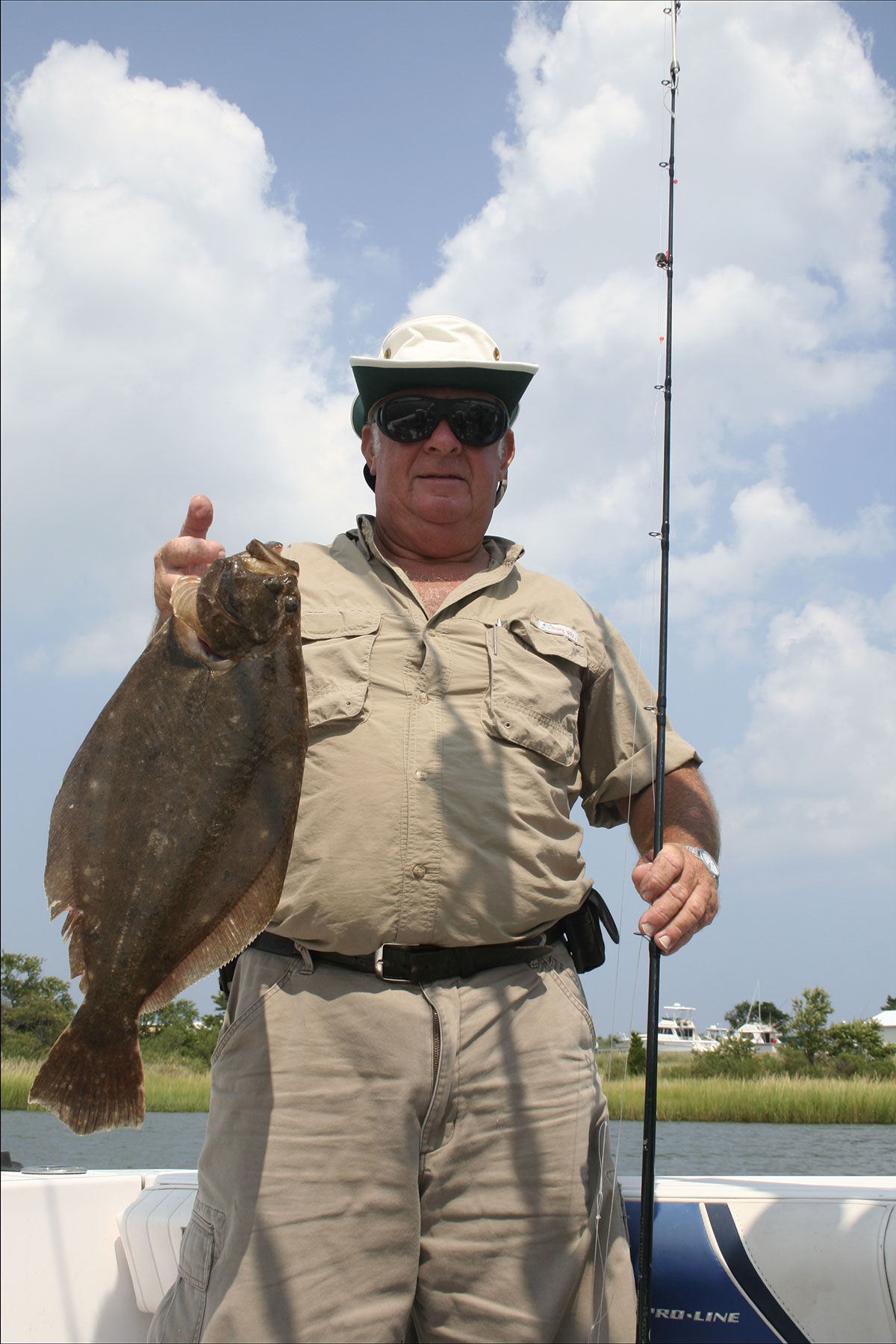
Once I have made a few drifts from the campground to the entrance to Southshore Marina, I have to decide where to fish next. If the tide moves to flood, I will work the flats between Southshore and White’s Creek up to the junction buoy and Massey’s landing. This is a lot of real estate, and it takes a certain amount of stealth fishing. This is also shallow water, and running across it at high speed is not going to help your cause. I will run down the deep channel along the east side of the flat until I am opposite the VFW before I begin my drift. Then, I will shut off the motor, lower my trolling motor, and use that to control the boat until the end of the drift.
If or when I catch a flounder, I will hit the MOB button on my SONAR to mark the spot, and after landing the fish, I will follow the same drift that produced my catch, no matter how large or small that fish may be. Flounder tend to gather in small groups in good feeding locations, so it pays to fish in one location until you fish it out. There may only be one fish there, so you wasted one or two drifts, but if a half dozen keepers are gathered in one little spot, wouldn’t you feel bad to have limited out in four drifts?
This flat area can be fished until a couple of hours into the ebb tide. At that point, it is time to move to the deep channels because that’s what the flounder will do. Unfortunately, that is also what the boat traffic will do.
There is a channel that runs from the entrance to the little marina at Bayshore Camp Grounds north to Southshore Marina. The last time I was there, this channel was marked only by a few sticks placed here and there. It doesn’t get a lot of boat traffic. There once was a duck blind off to the west of the channel, and I caught my largest flounder, an 8-pounder, there. Here, too, your trolling motor is your friend. Look for drains out of the marsh and fish them hard.
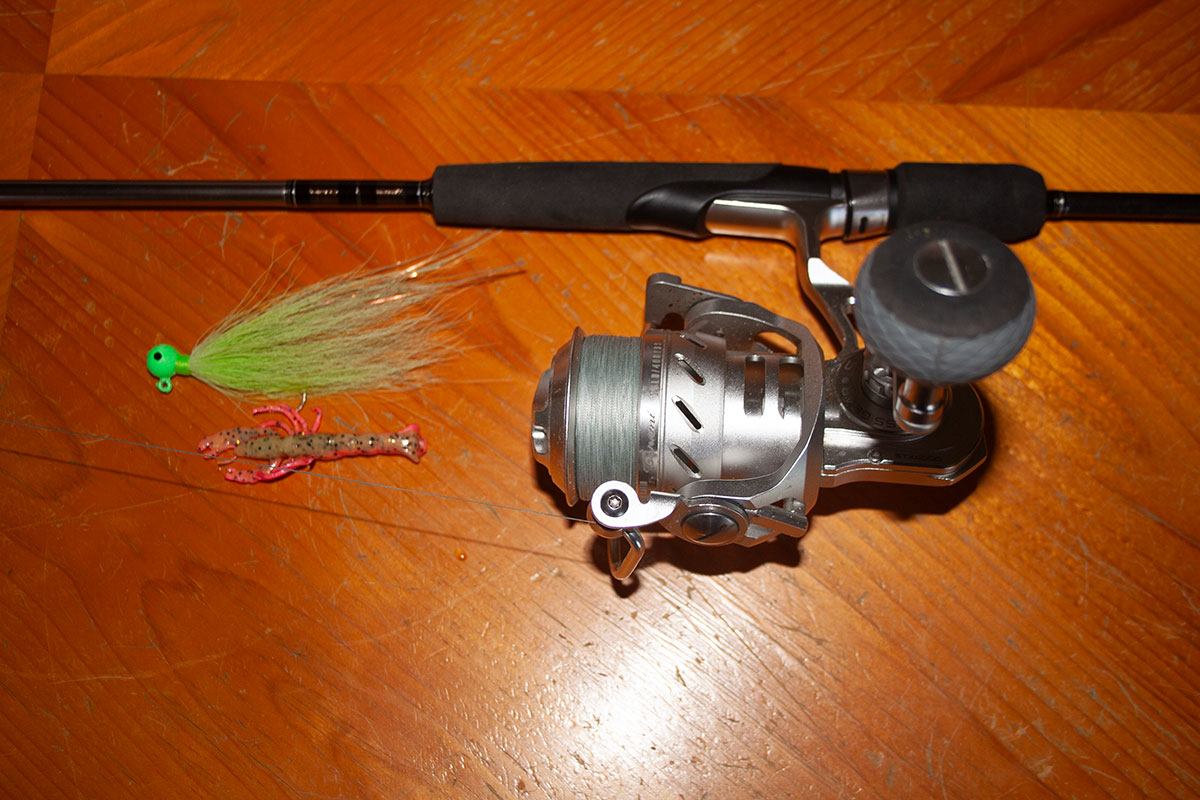
Bait & Tackle
Live minnows are the top bait for fishing Indian River Bay. This body of water is the nursery ground for a variety of species, including striped bass, tog, flounder, and numerous types of minnows. There are also shrimp and crabs that flounder like to eat, but they are difficult to find, and if you use a small blue crab, you are likely to get arrested.
When fishing the flats, I always use a single live minnow on a circle hook without any weight. This bait swims behind the boat from a rod holder set in the stern. In deeper water, I use a knocker rig. A round sinker is set about 12 inches above the circle hook. I use a sinker that is just heavy enough to keep the minnow swimming just above the bottom.
One rig that has been very good to me is a round, green bucktail decorated with a Gulp crawfish. I have no idea what the flounder think this thing is, but they gobble it up like a kid eating chocolate eggs on Easter morning.
| DELAWARE LICENSE |
| Delaware does require a general fishing license to fish in the state. This license covers fresh and saltwater plus crabbing and clamming. The cost for those between 16 and 64 is $8.50 for Delaware residents and $20 for non-residents. Trout stamps cost $4.20 for residents and $6.20 for non-residents. Residents between 12 and 15 must have a young-angler trout stamp at a cost of $2.10. All license money is accounted for and must be spent on fishing related projects. I know this is true because I am on the advisory council that is in charge of the money and have been since the license became law.
E. Burnley |
Remember to keep your tackle light. I use a Tsunami Air Wave Elite rod and a Tsunami Saltx reel with 15-pound braid. I always use a top-shot of 20-pound fluorocarbon line to protect the braid from abrasion, with an Albright knot connecting the braid to the fluoro.
When fishing with bait, I always use a circle hook. These hooks work on every fish I try to catch except tog. Tog don’t take a bait far enough into their mouth before spitting out the shells and the hook for a circle hook to work correctly.
For the 2024 season, summer flounder regulations in Delaware are a 16-inch minimum size from January 1 until May 31 with a four-fish bag limit. From June 1 until December 31 the minimum size goes up to 17.5 inches and bag limit remains at four fish per person per day.
